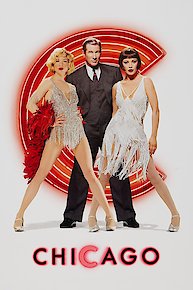
Bureau of Missing Persons
Where to Watch Bureau of Missing Persons

Bureau of Missing Persons is a 1933 pre-Code American crime film directed by Roy Del Ruth and based on the book "Missing Men" by John H. Ayers and Carol Bird. The film is a melange of crime drama, romance, and wry humor, characteristic of the cinematic approach during the early 1930s when Hollywood enjoyed greater freedom in storylines prior to the strict enforcement of the Hays Code. Starring Bette Davis, Lewis Stone, Pat O'Brien, and Glenda Farrell, the film offers a glimpse into the lives and workings of a police department division dedicated to solving the mysteries of those who vanish without a trace.
The movie opens with a bustling depiction of the Bureau of Missing Persons, a unit within the police department that handles the cases of people who have disappeared. This special division is a maelitre in the urban labyrinth, a place where the lines between detective work and social service blur, as officers are tasked with piecing together the shards of countless disjointed lives.
Into this frenetic world of lost souls and seeking loved ones comes Butch Saunders, played by Pat O'Brien, a tough, no-nonsense detective demoted from the Homicide Division to Missing Persons due to his headstrong and often unorthodox methods. Butch's brusque manner initially clashes with the more compassionate approach of the department, especially with the division's head Captain Webb, portrayed by Lewis Stone, who embodies a combination of stern leadership and fatherly understanding.
Bette Davis' role is that of Norma Roberts, a young and distressed woman with a beguiling mystery. Her enigmatic predicament sets the narrative ticking, as she reports her missing husband and convinces Saunders to take a deeply personal interest in her case. While professional at first, the relationship between Saunders and Norma slowly tangles with threads of mutual attraction and a complex network of emotions. Norma's vulnerability and resilience draw Butch in, causing him to question his preconceptions about the individuals who drift into the realm of the "missing."
The film is charged with the energy of both the bustling city and the pulsing beat of the police headquarters. Through a series of swift encounters and investigative exploits, the audience is introduced to a variety of characters, each representing a different facet of urban life in the 30s—some comic, some tragic, and others mysterious. Glenda Farrell adds a spark of vitality in her role as Belle Howard, a savvy reporter with an ace up her sleeve, who often finds her path crossing with the detectives of the Bureau.
The plot thickens and winds through a variety of scenarios, all showcasing the detective work involved in tracking down those who have vanished. It deals with themes such as loss, despair, hope, and redemption. The story provides an engaging look at how people from all walks of life can disappear —sometimes willingly, sometimes under curious circumstances— and how each case requires not just shrewd investigative skills, but also empathy and understanding.
From heart-wrenching tales of missing persons to heartwarming reunions, the movie oscillates between the gritty realism of a police procedural and the emotive melodrama of personal stories. It navigates the dichotomy of skepticism and sentimentality as Butch Saunders delves deeper into his own feelings and the truth behind the disappearances.
Technical aspects of the film like set design, lighting, and camera work are indicative of the era, capturing the Art Deco sensibilities and the noirish shadow play that were becoming popular in the genre. The dialogue is sharp, often peppered with the colloquialisms and snappy repartee characteristic of Pre-Code films. Fast-paced editing keeps the story moving, never lingering too long in sentiment or suspense, but rather driving forward to piece together each mystery.
Moreover, Bureau of Missing Persons provides an early look at the roles played by Bette Davis, whose career trajectory would soon ascend to her becoming one of Hollywood's most celebrated actresses. Likewise, Pat O'Brien provides a robust and charismatic performance, embodying the archetype of the hard-boiled detective with a soft heart.
As the narrative unfolds, the movie navigates the complexities of human emotion and the enigma of identity. It paints the picture of a society where individuals can get lost amidst the crowd and how a dedicated few work tirelessly to restore lost connections. Without divulging too much of the plot, it's safe to say that Bureau of Missing Persons is a film that goes beyond a simple detective yarn, instead offering a snapshot of a time, a city, and the souls that keep its secrets.
Bureau of Missing Persons is a Comedy, Crime, Drama movie released in 1933. It has a runtime of 73 min. Critics and viewers have rated it moderate reviews, with an IMDb score of 6.5..

















































